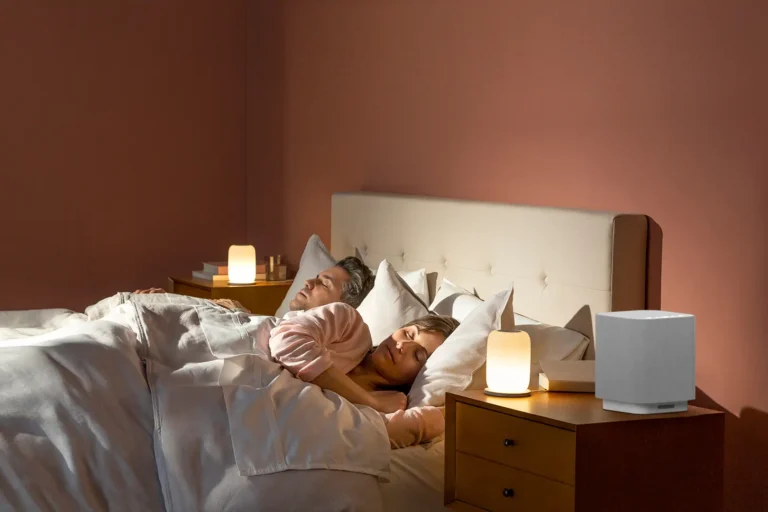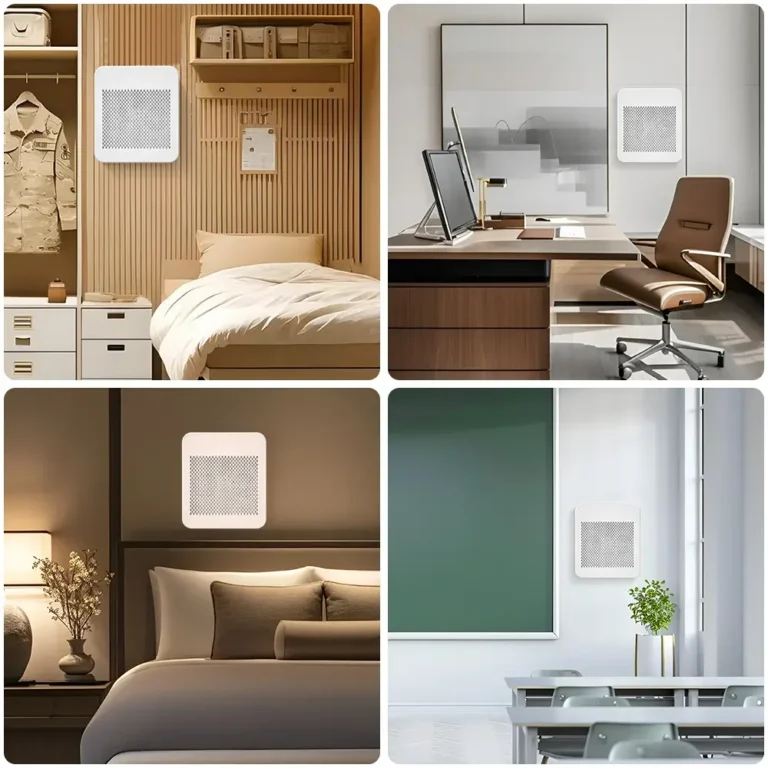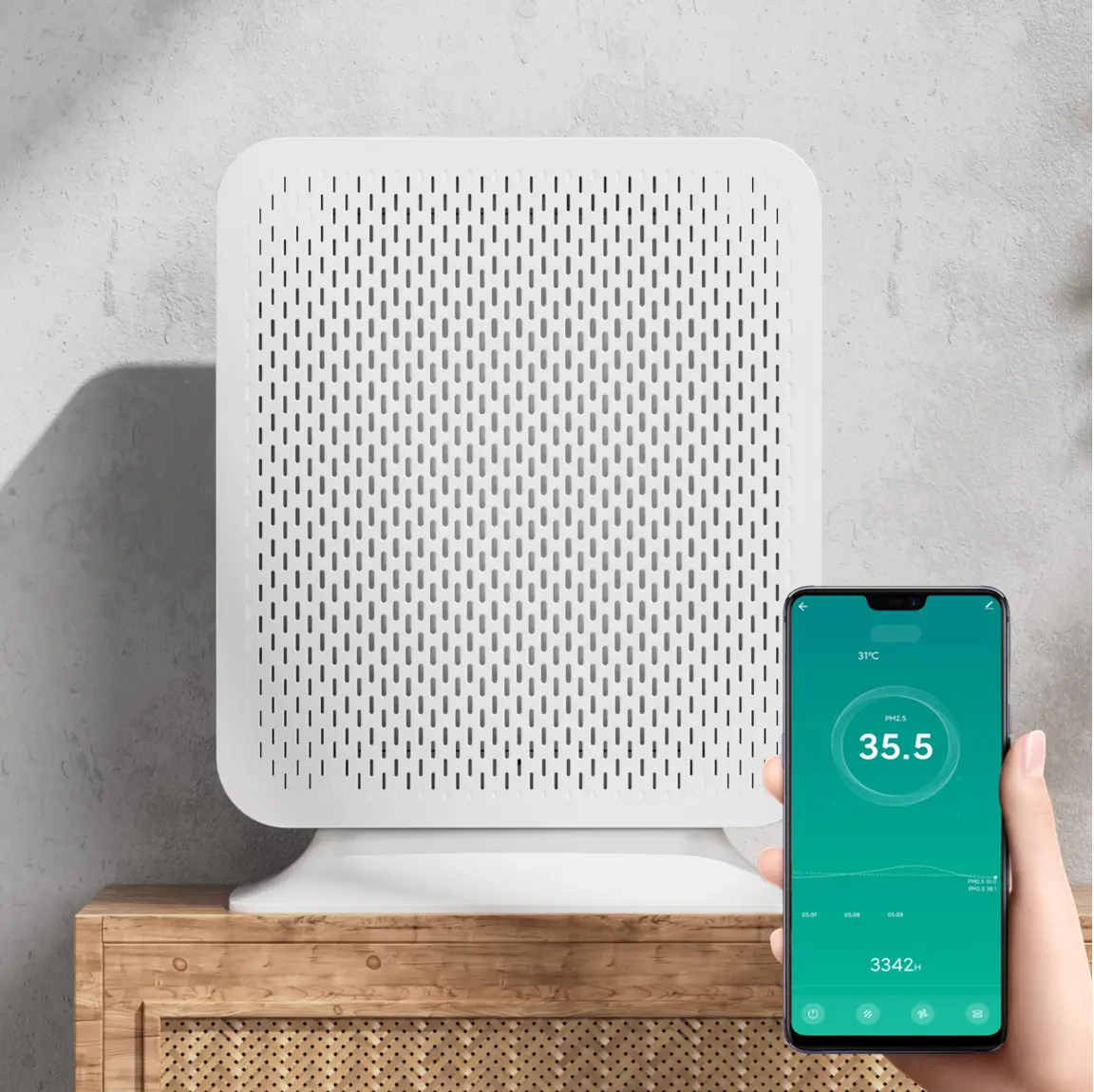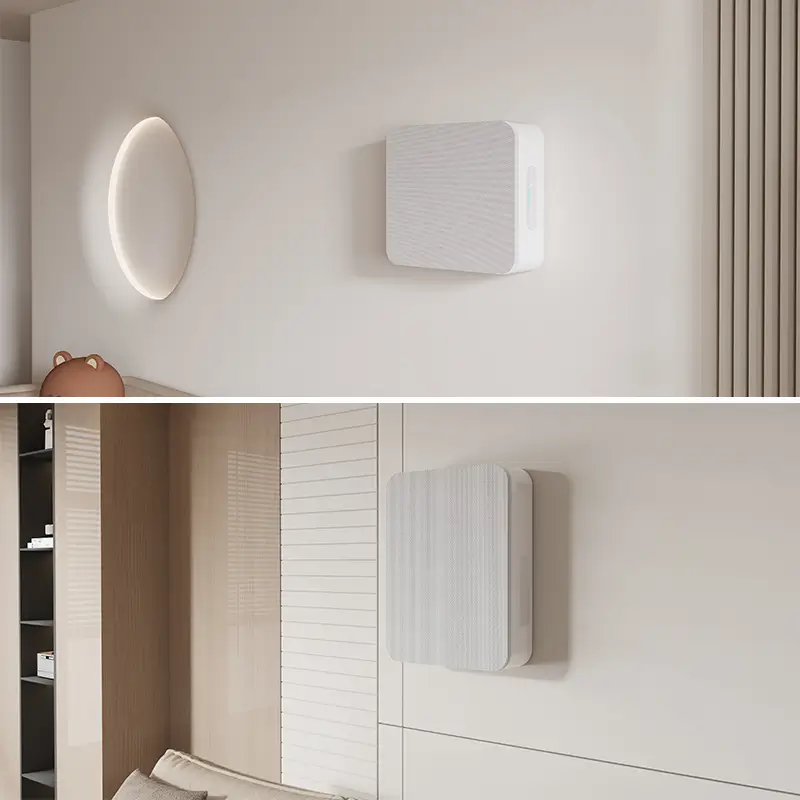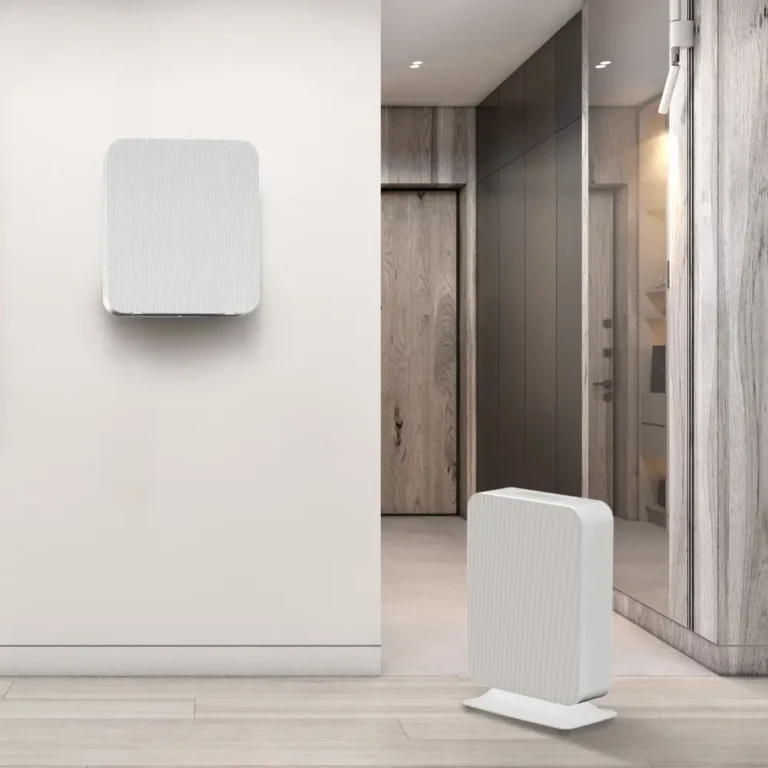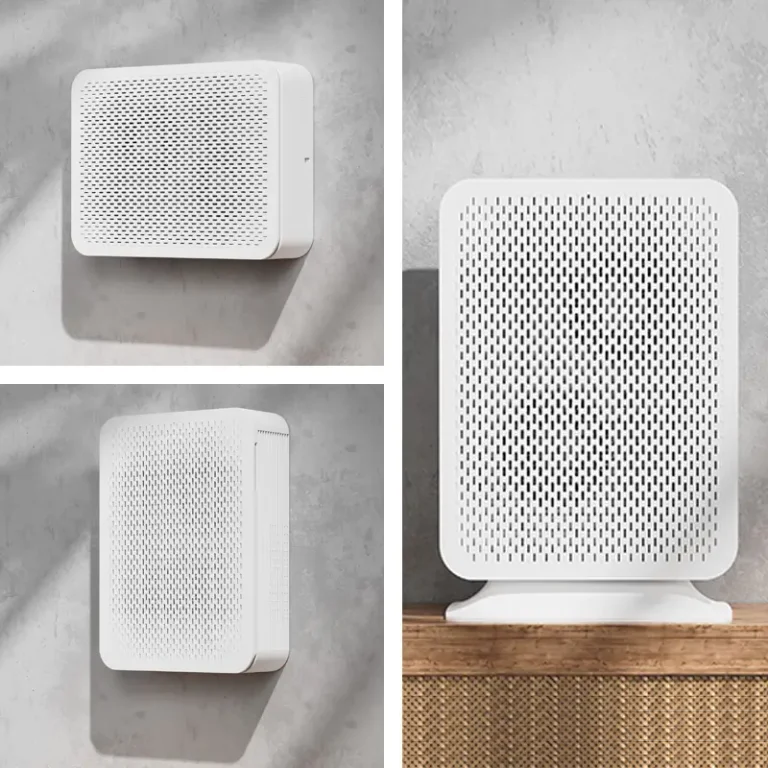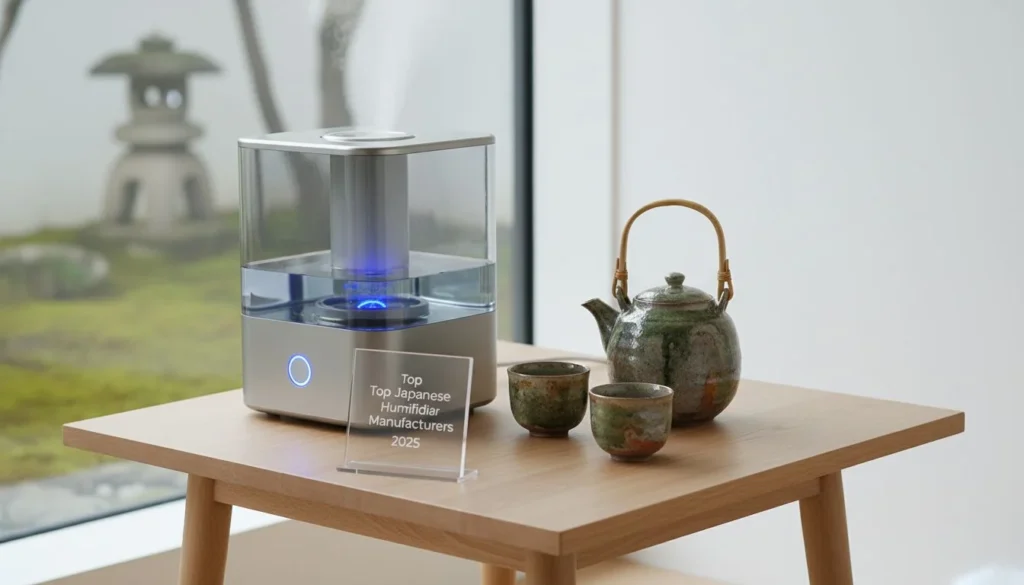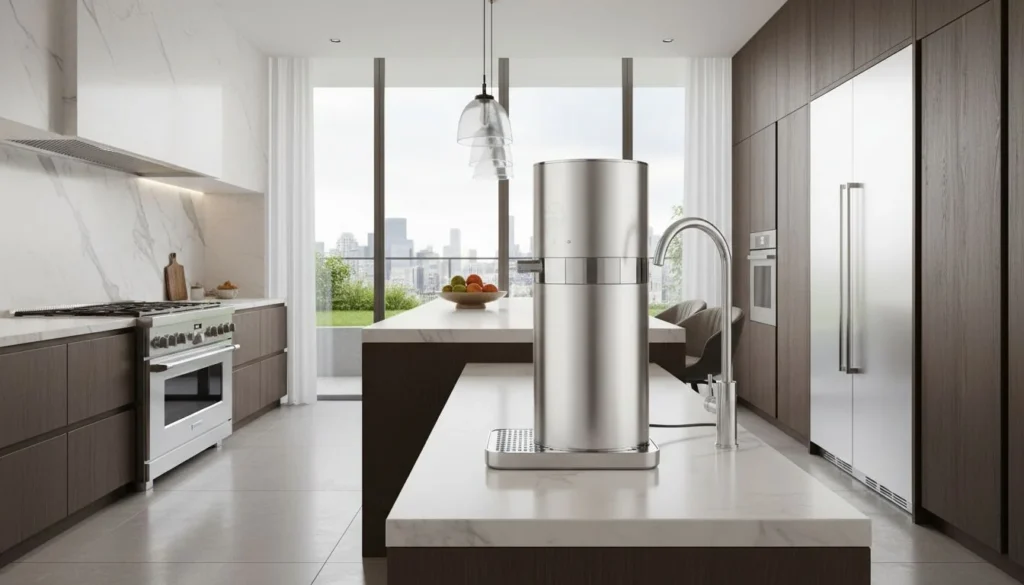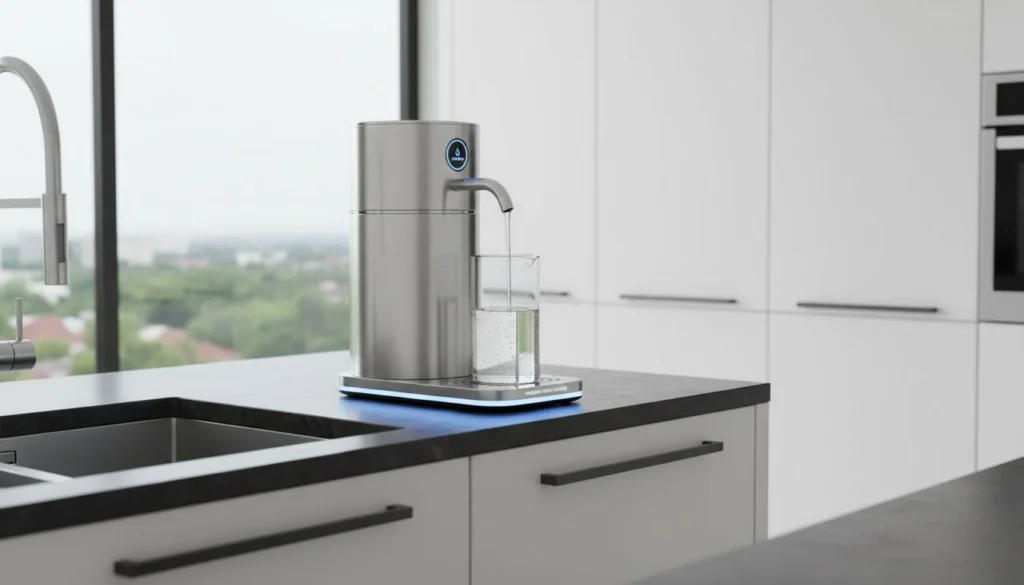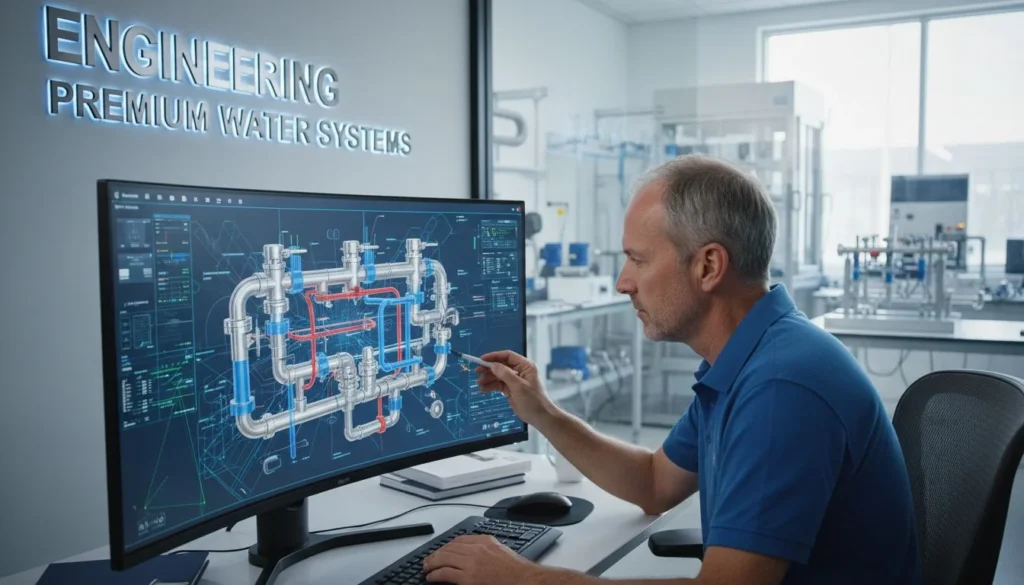In today's world, indoor air quality has become an indispensable foundation for a healthy modern life. From wildfire smoke and household VOCs to airborne viruses, air purifiers are no longer optional but a necessity. The market, however, is often confusing. This article cuts through the noise, providing a clear, data-driven guide to the best air purifiers available in 2025. Based on rigorous lab tests and extensive user feedback, we've identified five top-performing models: the Coway Airmega AP-1512HH Mighty, Blueair Blue Pure 211+ Auto, Levoit Core 400S, Rabbit Air A3, and Winix 5500-2. We'll help you understand what makes an air purifier effective and how to choose the right one for your home.
Decoding the Tech: A 2025 Buyer's Primer
To effectively navigate the air purifier market, understanding key technologies and performance metrics is essential. This primer demystifies core concepts, providing the foundational knowledge for an informed decision.
Filtration Fundamentals: The Pillars of Clean Air
At its core, an air purifier relies on a multi-stage filtration system, typically comprising a pre-filter, an activated carbon filter, and a high-efficiency particulate filter.
True HEPA (High-Efficiency Particulate Air)
True HEPA is the gold standard for particulate filtration. A True HEPA filter is certified to remove at least 99.97% of airborne particles with a size of 0.3 microns (µm). This specific size is challenging for filters to capture, yet True HEPA filters are often even more effective at capturing both smaller (e.g., viruses) and larger particles (e.g., pollen, dust mites). Terms like "True HEPA," "H13," or "H14" signify this rigorous, independently verified standard. Be wary of ambiguous terms like "HEPA-type" or "HEPA-like," which do not meet this stringent efficiency.
활성탄
While HEPA filters excel at capturing solid particles, they are ineffective against gases, odors, and Volatile Organic Compounds (VOCs). This is where activated carbon filters come in. Activated carbon is treated to create millions of tiny pores, forming a vast internal surface area that traps gas and odor molecules through adsorption. The effectiveness of carbon filters varies significantly; pellet-based filters offer substantially more surface area and longer contact time, leading to superior removal of smoke, cooking fumes, pet odors, and chemical off-gassing compared to basic carbon-coated pads.
Pre-Filters
The pre-filter is the first line of defense, designed to capture larger airborne particles such as pet hair, human hair, lint, and large dust. By trapping this debris, pre-filters significantly extend the life and maintain the efficiency of the more delicate and expensive HEPA and carbon filters. Many modern units feature washable pre-filters, offering a convenient and cost-effective maintenance solution.
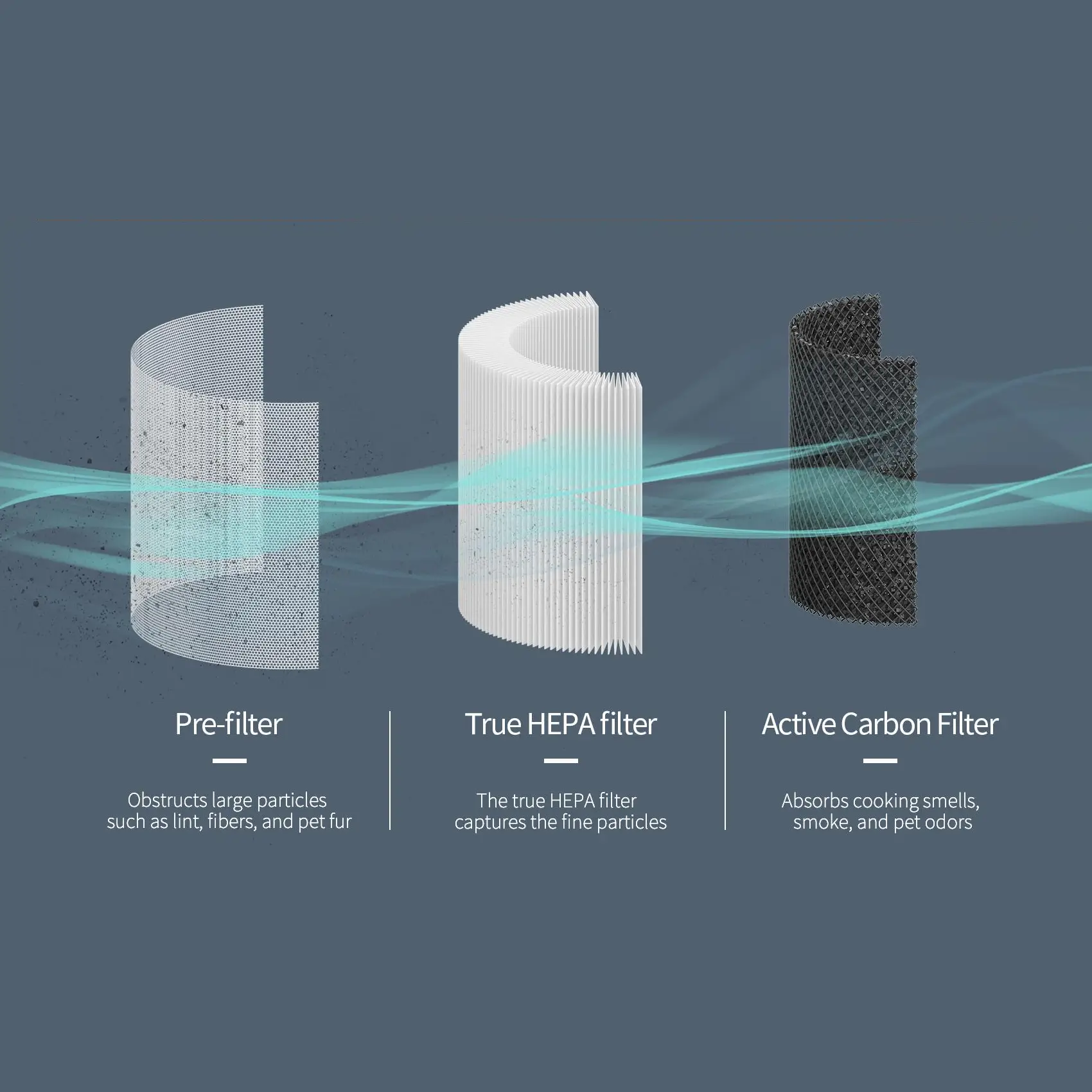
The Metrics That Matter: CADR and ACH
Beyond filter types, two crucial metrics quantify an air purifier's performance: Clean Air Delivery Rate (CADR) and Air Changes Per Hour (ACH).
청정 공기 전달률(CADR)
CADR, developed by the Association of Home Appliance Manufacturers (AHAM), is the industry-standard metric for measuring the volume of filtered air a purifier delivers. Expressed in cubic feet per minute (CFM), it rates performance against tobacco smoke, dust, and pollen. A higher CADR indicates faster and more efficient air cleaning.
Interpreting CADR:
- CADR is measured at the purifier's highest (and often loudest) fan setting.
- AHAM's "Two-Thirds Rule": Select a unit with a Smoke CADR rating at least two-thirds of the room's area in square feet. For optimal performance, aim to match the Smoke CADR directly to the square footage (e.g., 300 CFM for a 300 sq. ft. room).
- Overpowering your space slightly allows the unit to clean effectively on quieter, lower settings.
Air Changes Per Hour (ACH)
ACH indicates how many times an air purifier can completely filter the entire volume of air in a given room per hour. While 2 ACH may suffice for general air quality, 4 to 5 ACH is recommended for individuals with allergies, asthma, or other respiratory sensitivities. A higher ACH rate ensures rapid removal of airborne allergens before they settle or are inhaled. When evaluating room size recommendations, always check the underlying ACH rate.
Smart Features vs. Gimmicks: Evaluating Modern Conveniences
Modern air purifiers often include
smart features. Prioritize those that enhance core functionality.
Auto Mode & Air Quality Sensors
A well-implemented Auto Mode, driven by an integrated air quality sensor (typically detecting PM2.5), is the most valuable smart feature. These sensors allow the purifier to monitor air quality in real-time, automatically adjusting fan speed to address detected pollutants (e.g., cooking smoke, pet dander) and powering down when the air is clean. This creates an efficient, hands-off experience that conserves energy and extends filter life. The effectiveness of Auto Mode hinges on the sensor's quality and responsiveness.
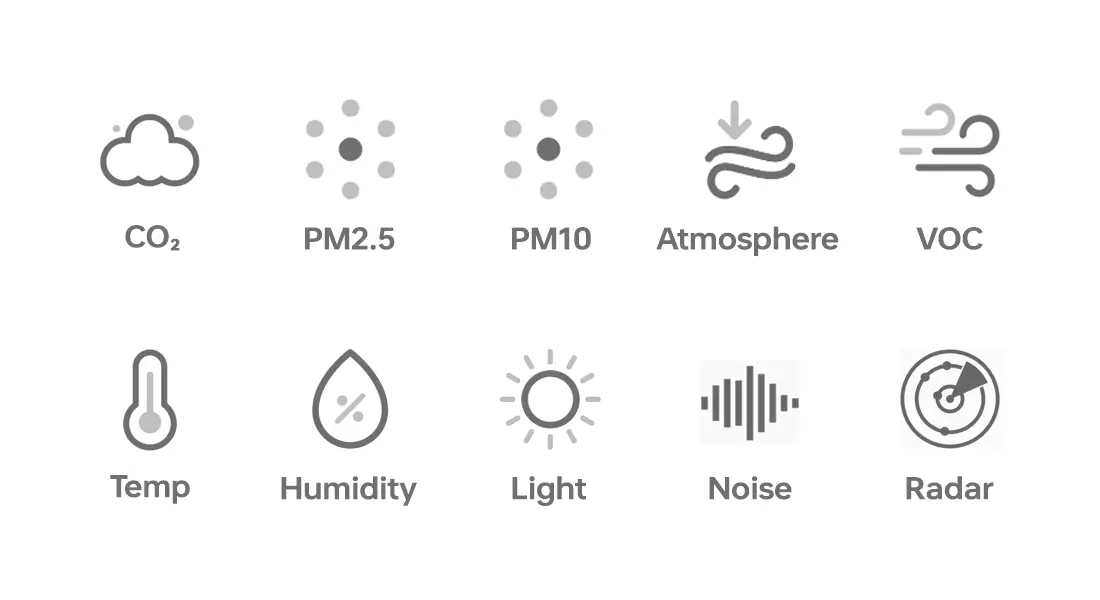
App & Voice Control
Many contemporary models offer Wi-Fi connectivity and companion smartphone apps. These apps provide conveniences such as remote operation, customized cleaning schedules, detailed air quality history, and accurate filter life monitoring. Voice control via smart assistants like Amazon Alexa or Google Assistant adds further hands-free convenience. While not essential, these features are highly valuable for users who appreciate smart home integration and data-rich feedback.
The Hidden Cost of Clean Air: Calculating Lifetime Value
The initial purchase price is only part of an air purifier's total cost. The true long-term expense, or Total Cost of Ownership (TCO), combines the upfront cost with ongoing filter replacement costs and annual energy consumption. Ignoring these recurring costs is a common and costly mistake.
Filter replacement is typically the most significant long-term expense, with replacement intervals varying from six months to several years. This variance can lead to substantial differences in annual running costs. Energy consumption, while a smaller factor, also contributes to TCO; look for Energy Star certified models for efficiency. A true "value" purchase is the model that offers the best performance-to-TCO ratio for your specific needs.
The 2025 Top-Rated Air Purifiers: In-Depth Reviews
This section provides a concise, data-rich analysis of the five top-rated air purifiers for 2025, synthesizing performance, features, usability, and long-term ownership costs.
1. Coway Airmega AP-1512HH Mighty: The Enduring Workhorse
| Category | Simplified Details |
|---|---|
| Best For | Small to medium rooms; users who want a reliable, quiet, and low-maintenance purifier. |
| Core Advantages | Reliable & Proven: A top-rated choice for over 10 years. Strong Filtration: 4-stage system with True HEPA; removes 99.97% of particles. Good CADR: 233–246 CFM, ideal for rooms up to 361 sq. ft. Quiet & Efficient: Very quiet (24.4–53.8 dB) and uses just 8.1W on medium. Auto Mode: Adjusts speed based on air quality. Affordable to Own: Low price (\$160–\$230) and reasonably priced filters (\$50–\$65). |
| 단점 | Basic Carbon Filter: Less effective on strong odors/VOCs. No Smart Features: No app or voice control. Bright Lights: Indicators can’t be dimmed—may bother light-sensitive users at night. |
| Recommendation | A no-frills, high-performance air purifier. Great value for most homes—quiet, efficient, and dependable. |
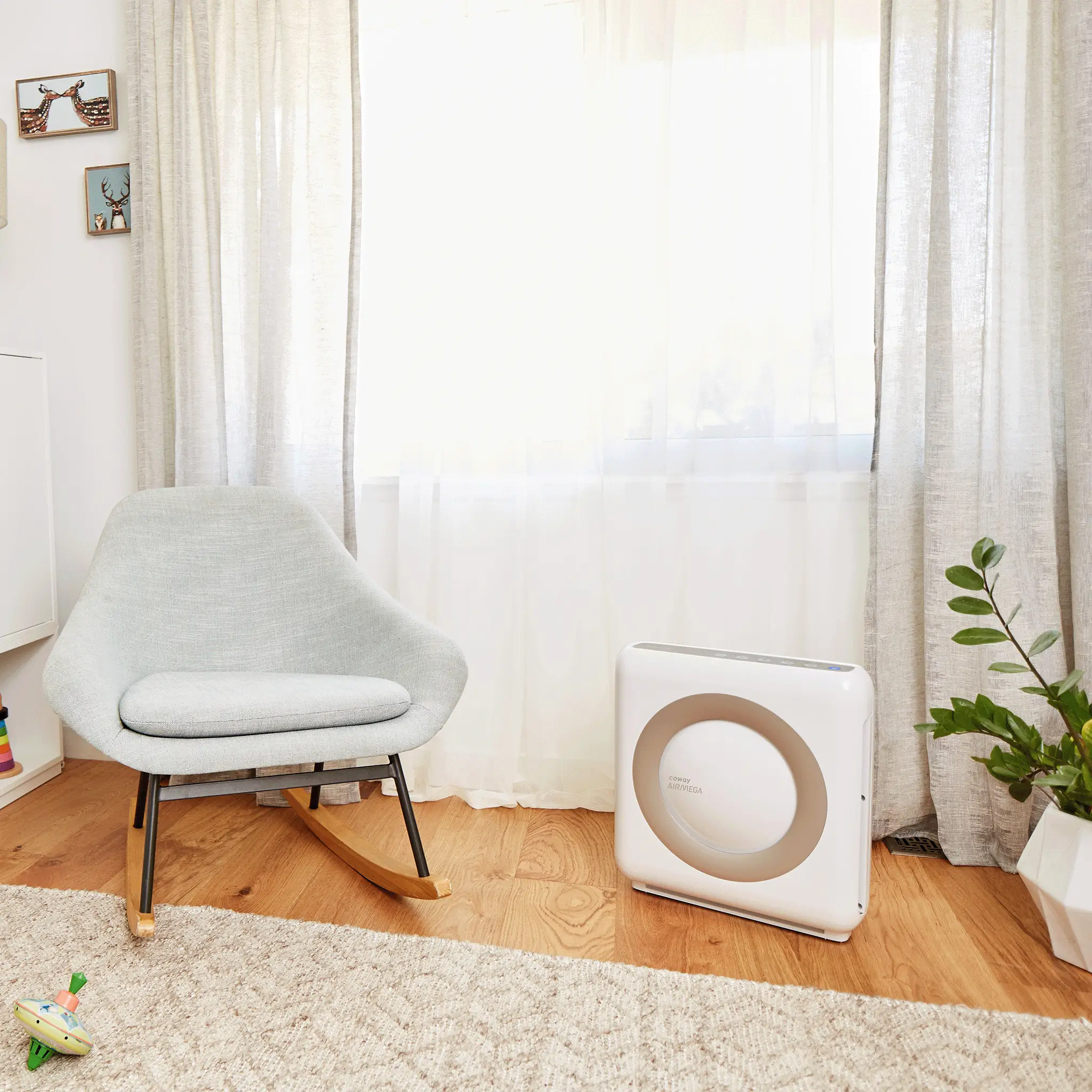
2. Blueair Blue Pure 211+ Auto: The Large-Room Powerhouse
| Category | Simplified Details |
|---|---|
| Best For | Large, open spaces; users wanting high air flow, quiet use, and clean design. |
| Core Advantages | Covers Large Rooms: High CADR (353–380 CFM), great for up to 550 sq. ft. HEPASilent™ Tech: Quiet and energy-saving; removes 99.97% of particles. Quiet & Efficient: Runs from 23–56 dB and uses only 4–38W. Stylish & Simple: Minimalist look with color filter options and one-button Auto Mode. |
| 단점 | Expensive Over Time: High price (\$320–\$340) and filter costs (\$60–\$70 every 6 months). No Smart Features: No app, voice control, or timer. Big & Bulky: Larger than most; less portable. |
| Recommendation | A top pick for big rooms. It's quiet, stylish, and powerful—worth the cost if you need serious air cleaning in large spaces. |
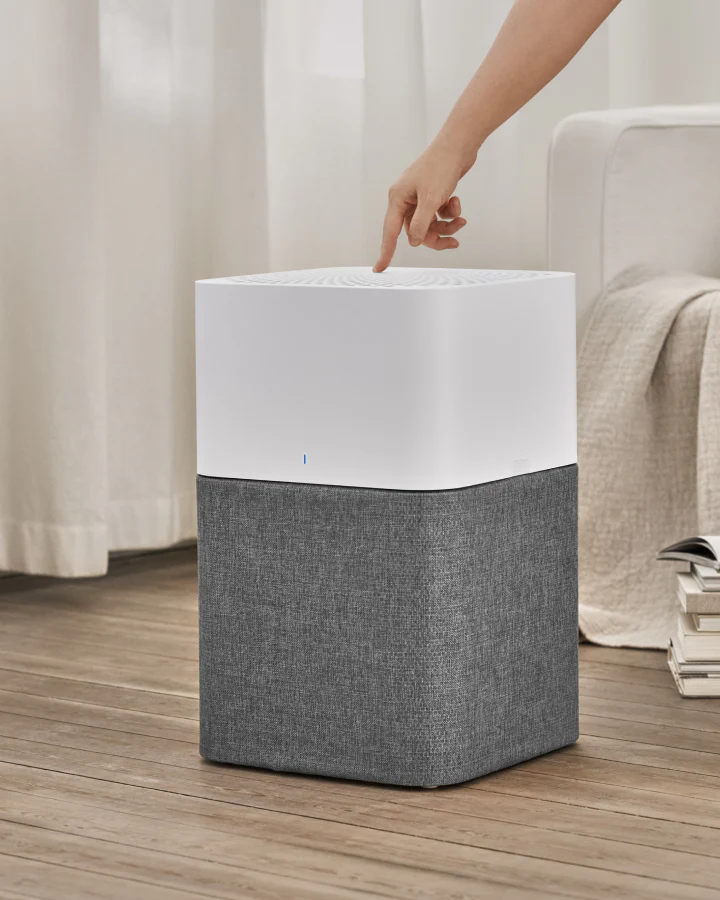
3. Levoit Core 400S: The Smart Home Champion
| Category | Simplified Details |
|---|---|
| Best For | Tech-savvy users, allergy sufferers, and anyone wanting a high-performance purifier for bedrooms or smart homes. |
| Core Advantages | Strong Filtration: 3-stage system with H13 HEPA and high-efficiency carbon filter. Custom Filters: Options for pet allergies or VOCs. Good Performance: \~260 CADR; covers up to 403 sq. ft. 조용한 작동: 24–52 dB; great for bedrooms. Smart Features: Full app control, scheduling, air quality tracking, Alexa/Google support. Auto Mode: Laser sensor adjusts fan speed based on PM2.5 levels. Sleep-Friendly: All lights can be turned off. Fair Cost: Priced at \$180–\$220 with \$50–\$60 filters. |
| 단점 | 필터 교체: Needs new filters every 6–12 months, which adds up. |
| Recommendation | A smart, quiet, and powerful purifier with great app features. Ideal for modern users who want both performance and convenience. |
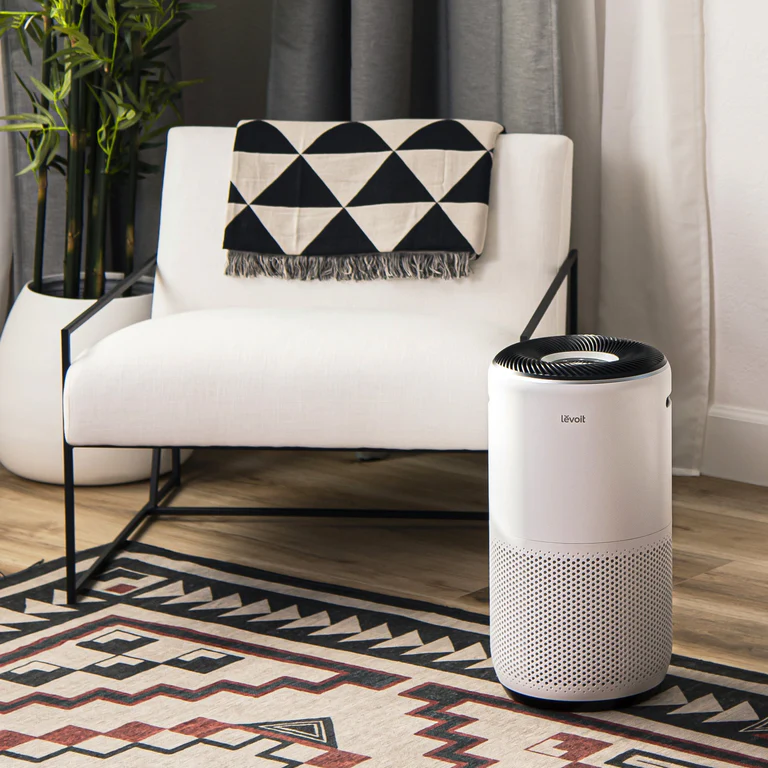
4. Rabbit Air A3: The Premium, Ultra-Quiet Specialist
| Category | Simplified Details |
|---|---|
| Best For | Users with allergies or sensitivities who want near-silent operation and are willing to invest in top-tier quality. |
| Core Advantages | 6-Stage Filtration: Includes BioGS HEPA, carbon filter, and customizable options (e.g., Germ Defense, Pet Allergy). Ultra Quiet: Almost silent at 20.3 dB on low. Strong Performance: 257–315 CADR; ideal for up to 535 sq. ft. Long-Lasting Filters: Up to 2 years = lower long-term cost. 스마트 컨트롤: App control, sensors, and auto sleep mode. Premium Look: Wall-mountable, slim, and customizable front panels. Excellent Warranty: 5 years + 24/7 support. |
| 단점 | High Price: Around \$750 upfront. |
| Recommendation | A top-tier air purifier for those who value quiet, custom features, and long-term quality. Ideal for health-sensitive or design-conscious users. |

5. Winix 5500-2: The Unbeatable Budget Champion
| Category | Simplified Details |
|---|---|
| Best For | Budget buyers who want strong air cleaning and features without overspending. |
| Core Advantages | Great Value: Performs like higher-end models at a lower price. Strong Filtration: Washable pre-filter, carbon filter, and True HEPA. PlasmaWave®: Optional ionizer for added pollutant breakdown. 높은 CADR: 232–246 CFM; covers up to 360 sq. ft. Full Features: Auto mode, VOC sensor, sleep mode, timer, remote. Low Cost to Own: \~\$160–\$250 price, \$40–\$50 filters lasting 12 months. |
| 단점 | Plain Design: Basic plastic look. Noisy on High: Can reach \~60 dB. Being Phased Out: Model discontinued as of May 2025, but still widely available. |
| Recommendation | The best value air purifier. It’s affordable, powerful, and feature-rich—ideal for users who want strong performance on a budget. |
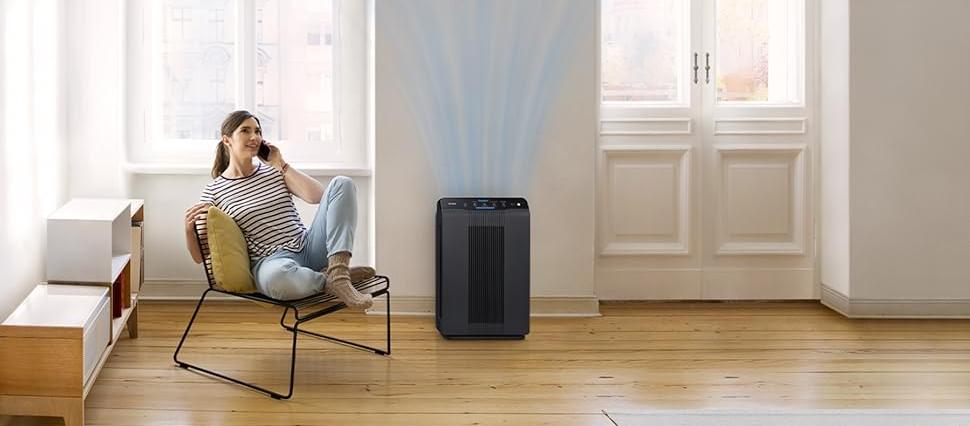
Head-to-Head: A Comparative Analysis
To highlight the key trade-offs in performance, usability, and long-term cost, this section provides direct, data-driven comparisons.
Master Specification Table (Key Indicators)
| 기능 | Coway Airmega AP-1512HH Mighty | Blueair Blue Pure 211+ Auto | Levoit Core 400S | Rabbit Air A3 | Winix 5500-2 |
|---|---|---|---|---|---|
| Price (Street) | ~$160 - $230 | ~$320 - $340 | ~$180 - $220 | ~$750 | ~$160 - $250 |
| CADR (Smoke/Dust/Pollen) | 233 / 246 / 240 CFM | 353 / 347 / 380 CFM | ~260 CFM | 257 / 262 / 315 CFM | 232 / 243 / 246 CFM |
| Coverage (@ ~5 ACH) | 361 sq. ft. | 550 sq. ft. | 403 sq. ft. | 535 sq. ft. | 360 sq. ft. |
| Noise Level (Min-Max) | 24.4 - 53.8 dB | 23 - 56 dB | ~24 - 52 dB | 20.3 - 51.0 dBA | 27 - 59.8 dB |
| Est. 5-Year TCO | $555 | $1,120 | $550 | $1,130 | $430 |
The Sound of Silence: A Noise Level Comparison
Noise output is a critical factor, especially for bedrooms or offices. The Rabbit Air A3 leads in quiet operation, being nearly imperceptible at its lowest setting. The Levoit Core 400S and Blueair 211+ Auto are also exceptionally quiet on low. The Coway Mighty and Winix 5500-2 are slightly louder but still fall into the "quiet" category. At maximum power, the Blueair 211+ Auto and Winix 5500-2 become significantly more audible, reflecting their powerful motors and high CADR, while the Rabbit Air A3 and Coway Mighty remain relatively subdued.
The True Cost of Ownership: A 5-Year Projection
The 5-year Total Cost of Ownership (TCO) provides a more accurate financial picture than just the sticker price. The Winix 5500-2 is the clear budget champion with the lowest TCO. The Coway Mighty and Levoit Core 400S offer excellent performance with moderate long-term costs. Interestingly, despite the Rabbit Air A3's high initial price, its long-lasting filters make its 5-year TCO comparable to the Blueair 211+ Auto, which has higher annual filter replacement costs. This demonstrates that a higher upfront cost doesn't always mean a higher long-term expense.
The Definitive Buying Guide: Choosing Your Ideal Purifier
The "best" air purifier is not universal; it depends on your specific needs, room size, primary pollutants, noise tolerance, and budget. Here are our actionable recommendations:
| Who It's For | Recommended Model(s) | 왜 |
|---|---|---|
| Allergy & Asthma Sufferers | Rabbit Air A3 | Advanced, customizable 6-stage filtration (BioGS HEPA reduces bacteria/viruses on filter), specialized filters (Pet Allergy, Germ Defense), and exceptionally quiet operation for undisturbed sleep. |
| 반려동물 소유자 | Levoit Core 400S / Rabbit Air A3 | Both excel at handling dander and odors. Levoit Core 400S offers an affordable solution with an optional "Pet Allergy" filter. Rabbit Air A3 provides premium, high-grade granular activated carbon and a "Pet Allergy" custom filter. |
| Smoke & VOCs Concerns | Coway Airmega AP-1512HH / Blueair Blue Pure 211+ Auto | Coway Mighty has a high Smoke CADR and proven effectiveness. Blueair 211+ Auto offers massive Smoke CADR and a specialized "Smokeblock" filter with double the activated carbon for enhanced removal. |
| Large, Open-Concept Spaces | Blueair Blue Pure 211+ Auto | Unparalleled performance with CADR over 350 CFM and 550 sq. ft. coverage. Engineered for rapid, efficient air circulation in large areas while remaining relatively quiet and energy-efficient. |
| Bedrooms & Quiet Offices | Levoit Core 400S / Rabbit Air A3 | Both are lauded for extremely quiet operation on lower settings. Levoit Core 400S offers a sleek design, quiet motor, and the crucial ability to turn off all display lights. Rabbit Air A3 is the premium choice, nearly inaudible on "Silent" speed with intelligent light sensing. |
| Best Performance on a Budget | Winix 5500-2 | Delivers CADR comparable to more expensive models with a full suite of features (Auto Mode, remote, sleep mode). Low street price and affordable replacement filters result in the lowest total cost of ownership in this guide. |
An Innovative Alternative: Wall-Mounted Air Purifiers
For those seeking to reclaim floor space and integrate air purification seamlessly into their living environment, HisoAir's wall-mounted air purifiers offer a compelling alternative. These ultra-slim units provide a sleek, modern aesthetic while taking up zero floor space. They feature ultra-sensitive smart sensing, Decibel Cancellation™ Technology for quiet operation, and advanced filtration including True HEPA and microbial treatment. With smart control via Wi-Fi and compatibility with smart home protocols, HisoAir provides a sophisticated and space-saving solution. For more details on HisoAir's innovative wall-mounted solutions, please visit their dedicated product page.
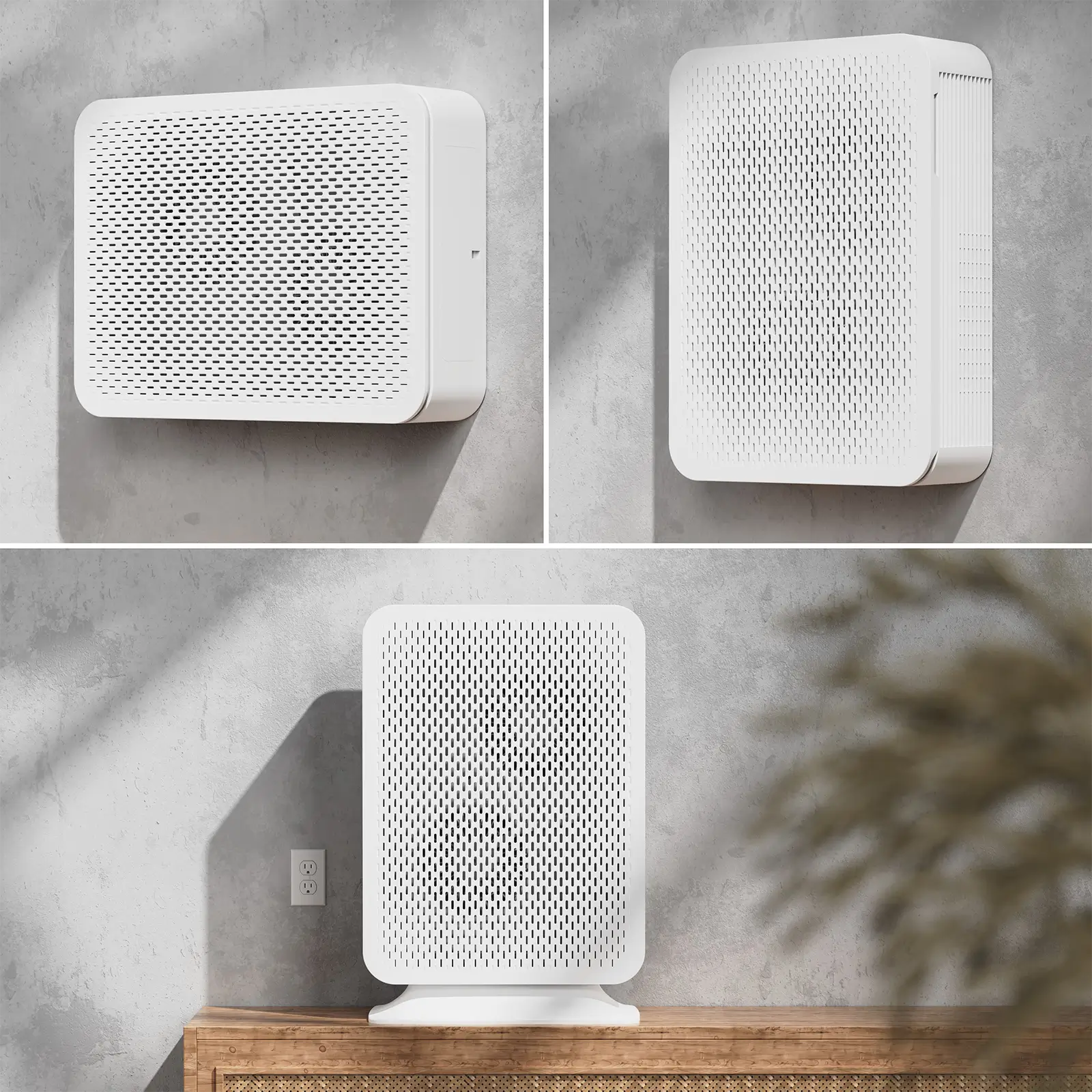
HisoAir - Wall-mounted Air purifiers
Concluding Insights & Future Outlook
The "best" air purifier is a personal choice, a careful balance of room size, specific pollutant concerns, noise tolerance, and budget. The key takeaway is to look beyond the sticker price and calculate the Total Cost of Ownership over the device's lifespan. By prioritizing core filtration technology and a responsive automatic mode over superfluous gimmicks, consumers can ensure they are investing in tangible air quality improvements.
Looking ahead, the air purifier market continues to evolve with trends toward multi-function devices, longer-lasting filters, and more advanced sensors. Energy Star certification is becoming a baseline expectation, pointing toward a future of smarter, more cost-effective, and more integrated solutions for maintaining a healthy home environment.
Ready to find your ideal air purifier? Explore our detailed reviews and comparative analysis to make an informed decision, or contact us for personalized recommendations.
자주 묻는 질문
Q: What is CADR?
A: CADR (Clean Air Delivery Rate) is an industry-standard metric measuring the volume of filtered air an air purifier can deliver, expressed in cubic feet per minute (CFM). A higher CADR indicates faster and more efficient air cleaning.
Q: Is True HEPA the same as H13?
A: True HEPA is a standard that requires a filter to remove at least 99.97% of particles 0.3 microns in size. H13 is a grade within the HEPA classification, specifically referring to filters that meet or exceed the True HEPA standard, often with slightly higher efficiency for very small particles.
Q: How often should I replace my air purifier filter?
A: Filter replacement intervals vary by model and usage, typically ranging from 6 months to 2 years for HEPA filters and 3-6 months for carbon filters. Always refer to the manufacturer's recommendations for your specific model.
Q: Can an air purifier help with pet odors?
A: Yes, air purifiers with activated carbon filters are effective at absorbing pet odors and other volatile organic compounds (VOCs) from the air. The quality and amount of activated carbon significantly impact their effectiveness.
Q: Are wall-mounted air purifiers effective?
A: Absolutely. Wall-mounted air purifiers, like those from HisoAir, offer effective air purification while saving floor space. They often incorporate advanced filtration, smart features, and quiet operation, making them a sleek and efficient solution for modern homes and commercial spaces.

